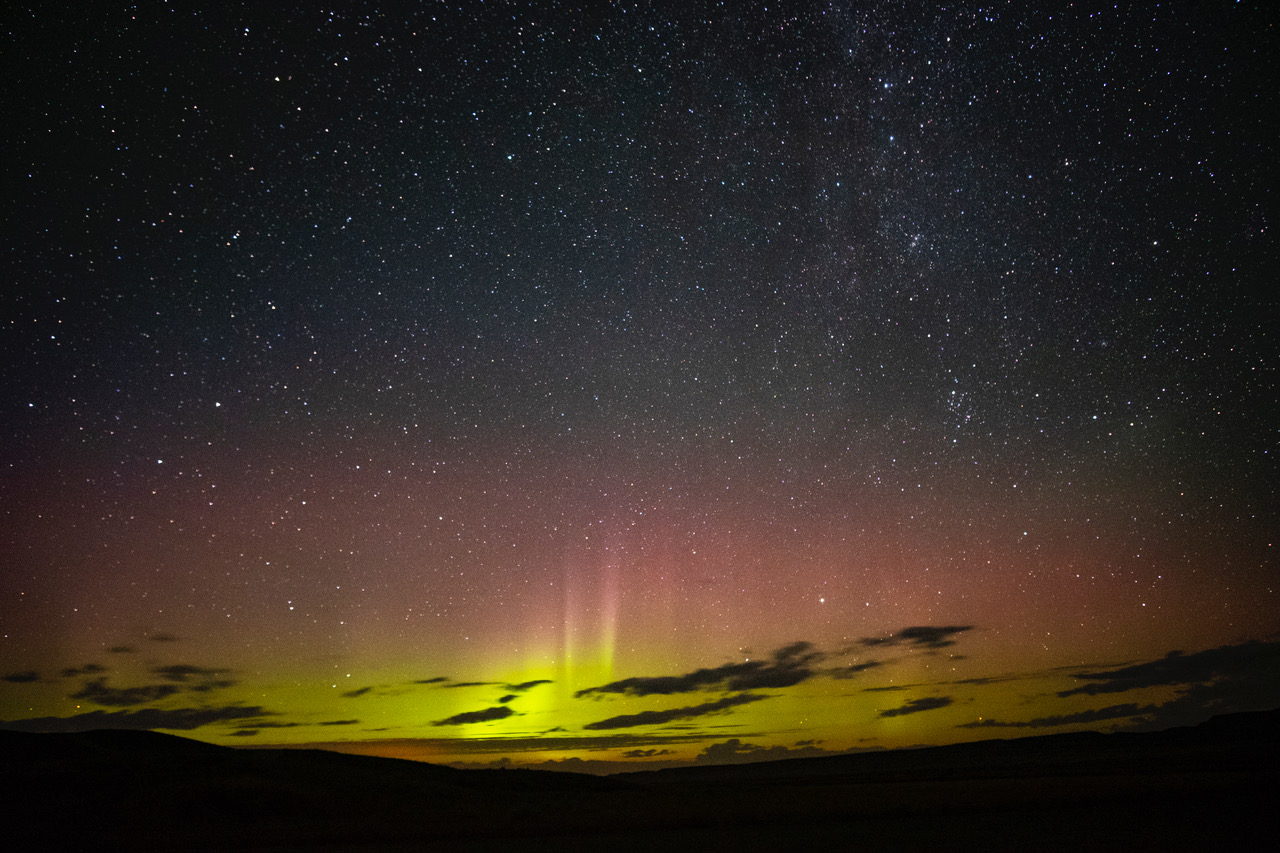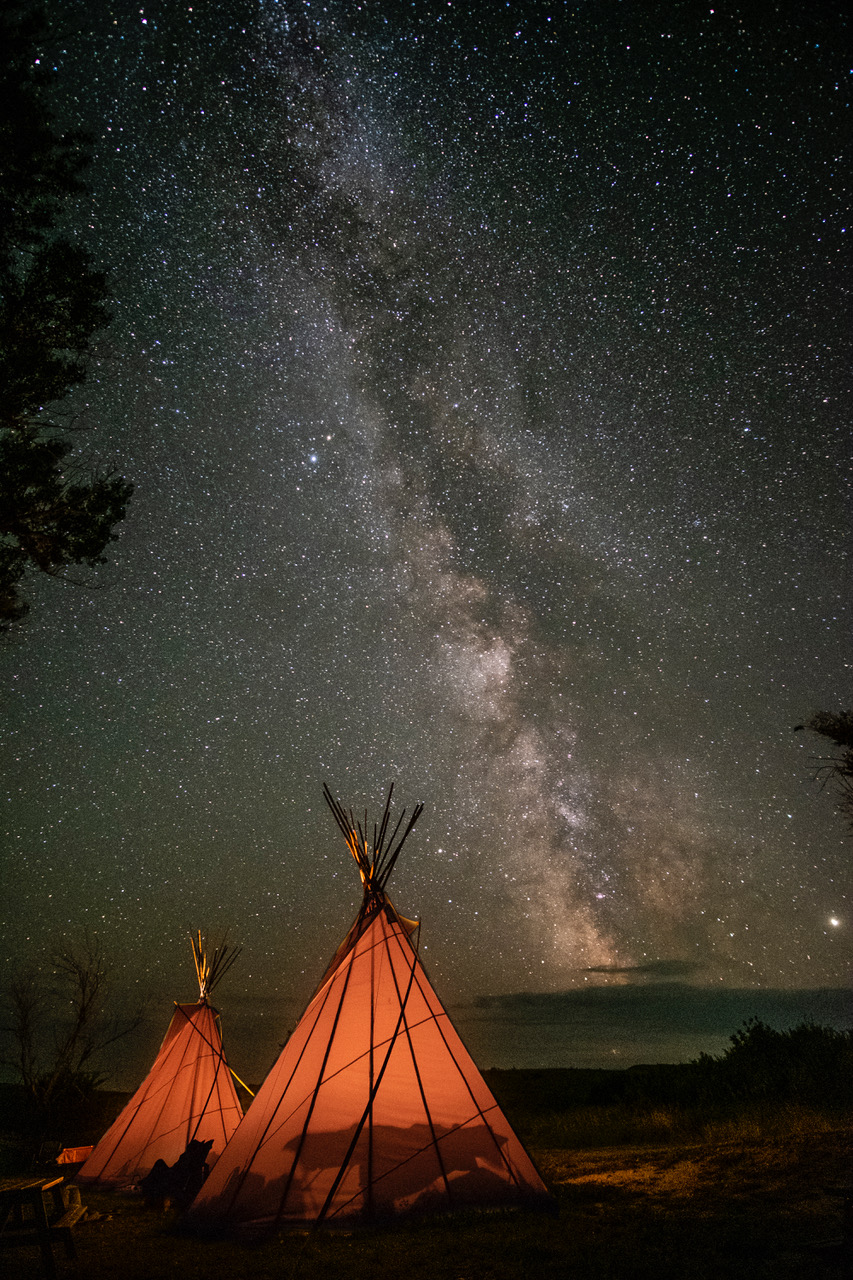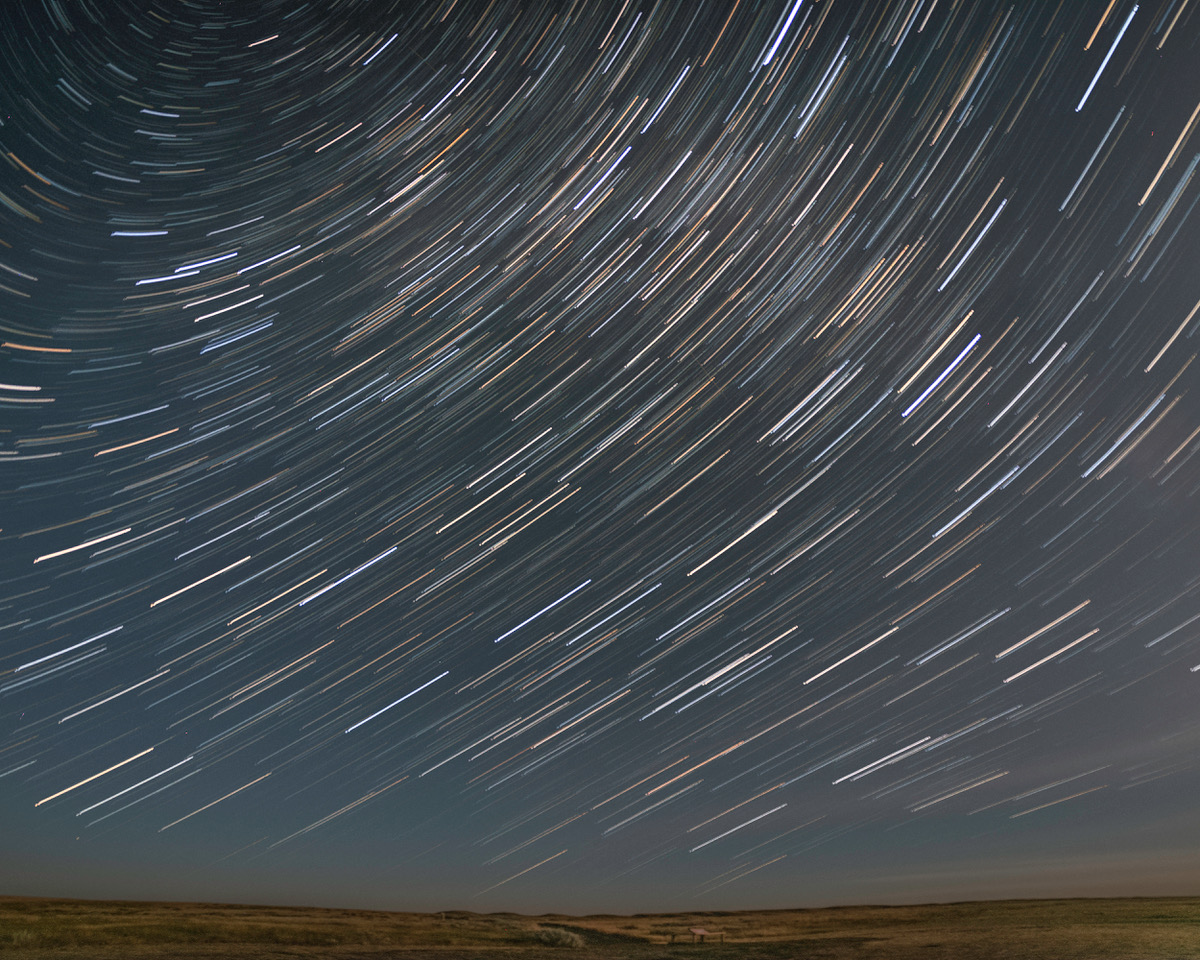Grasslands National Park - Saskatchewan | Dark-Sky Preserve
Photos: Tim Yaworski @livingskyguy
Grasslands National Park was designated as a RASC Dark-Sky Preserve on October 2, 2009, in partnership with Parks Canada. The park is quite large (a combined 907 square kilometres in size) and is split into two separate blocks - East and West. The blocks are separated by a drive of approximately 90 minutes.
The park is located in an area with pristine sky of Bortle Scale Class 1, a nighttime sky quality level of approximately 22.0 mag/arcsec2, and a limiting magnitude of at least magnitude 7.5. In 2017, a naked eye magnitude of 8.4 was recorded where the “sky was so full of stars that the Milky Way could not be distinguished from the rest of the sky around it because there were so many stars!” The darkness allows for natural green sky-glow to almost always be seen on the horizon, and it is not unusual for observers to notice they have several shadows on the ground cast by the bright stars and planets.
In partnership with contracted astronomers and speakers from the Regina and Saskatoon RASC Centres, the park hosts major astronomical events in May and July, and the park interpreters regularly host outreach astronomy events on their own. The park also owns a telescope and binoculars. Information on upcoming events can be found on the park’s website.
In very wet weather, most roads in the park become difficult to drive on, so check ahead if the weather might be wet. Despite this, with the dryness of the area, a heavy rainstorm will dry out for excellent observing within a few hours. The park can be windy, so bring tie-downs for tarps, tents, and telescopes. Some areas of the park also have rattlesnakes, but they are never an issue during nighttime viewing since they retreat to their burrows once the day cools down.
The area is an important grassland with much of the park having original prairie grasslands or badlands under restoration. The area is generally an eroded, grassy badlands with occasional dinosaur fossil bones visible, however, collecting within the park is prohibited. Animals of note within the park are pure lineage bison, antelope, many birds, and large prairie dog colonies. Resources on the ecological value of the site are available here. If hiking, let the Park Office know where you are going and take a litre of water for every hour you intend to hike.
Tourism Saskatchewan
East Block
The East Block is accessible by car, and one can take routes such as SK Highway 58 or SK Highway 2 in order to get to SK Highway 18, which runs along the east and north sides of the Block before providing a scenic route to or from the West Block. The nearest towns with last-chance gas and groceries are Gravelbourg, Rockglen and Assiniboia. No matter how full your tank is, make sure to top off the tank at one of these towns before proceeding, as distances are very long and nearby card-lock services are unreliable.
If you are camping or overnight hiking at the park, register at the Rock Creek (McGowan’s) Park Office. Rock Creek campground provides camping for 28 RVs, numerous tents, and has a non-powered overflow area and a screened cookhouse. There are also four rentable oTENTiks. Visit Parks Canada's Reservation Service to book a site. Although access and observing are allowed anywhere within the park at all hours, observers generally use the (non-powered) area just south of the campground office. This area provides a flat area for telescope set-up, and a washroom (but no water hook-ups). It also contains a corral for equestrian adventurers. Please note that this side of the park is easy to get lost in and even contains quicksand.
West Block
The West Block is accessible by car, south along SK Highway 4 from Swift Current. SK Highway 18 provides an alternate scenic route if coming from the east and is also the access road to the East Block. Stop at Val Marie, the nearest town and home of the Park Office. Val Marie is very small and most stores are only open periodically, but the village offers a gas station, grocery store, pub, the Harvest Moon restaurant, and a coffee shop at the Little Red Brick Schoolhouse. The Schoolhouse also doubles as the local museum, complete with astrophotographer Alan Dyer’s amazing mural of dark-sky images taken at the park.
If you are camping or overnight hiking at the Park, register at the Park Office before proceeding into the park and make sure your gas tank is full, as distances are large here and it is easy to run out of gas in the middle of nowhere. Although there are other roads into the park, the best access is 20 kilometres east of Val Marie on Highway 18, then onto a fair-weather gravel road southward to the Frenchman Valley campground. The campground has the Coulee Centre for activities, with available water, a drink machine, power, and washrooms. Frenchman Valley provides camping for 24 RVs, numerous tents, and has a large non-powered overflow area. Visit Parks Canada's Reservation Service to book a site.
Although access and observing are allowed anywhere within the park at all hours (due to numerous uncontrolled access roads and sidings), observers generally use the (non-powered) area just west of Frenchman Valley campground, called Belza House (though the house no longer exists). It provides a flat area for telescope set-up, has a few treed sites for tenting, and a washroom (but no water). It also contains a corral for equestrian adventurers. The site is a 5-minute walk to the east from Frenchman Valley campground along a gravel path. Belza House is up on a plateau and offers a spectacular view of the park and valley, and is shielded from any main campground RV lights. If tenting there, special permission from the Park Office must be obtained separately from Frenchman Valley camping.
Visit their website!
Tourism Saskatchewan



